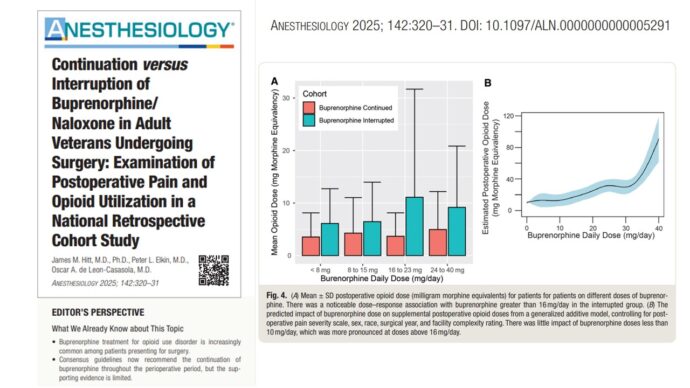
Addressing perioperative anemia: New insights from a comprehensive review
Introduction
Perioperative anemia, a condition affecting nearly one-third of surgical patients, presents a significant challenge in medical practice. This condition is often exacerbated by surgery due to factors such as blood loss, hemodilution, and bone marrow suppression. Anemia is linked to a range of negative outcomes, including increased mortality, longer hospital stays, and higher rates of readmissions. Despite these risks, many clinicians are not fully equipped to effectively screen and manage anemia preoperatively. A recent review by the Society for Perioperative Assessment and Quality Improvement sheds light on the diagnostic approaches and treatment strategies that could transform perioperative care.
Understanding the impact of perioperative anemia
The World Health Organization defines anemia as hemoglobin levels below 13.0 g/dl for men and 12.0 g/dl for nonpregnant women. Even mild anemia has been associated with an increased risk of postoperative mortality and cardiovascular complications. Alarmingly, many healthcare providers underestimate the significance of mild anemia, assuming it does not impact outcomes unless severe enough to warrant transfusion. This misconception can lead to poor perioperative management.
Key findings
- Prevalence and risks:
- Approximately one-third of surgical patients are anemic.
- Anemia is associated with adverse outcomes, including increased mortality, prolonged hospital stays, and a higher likelihood of postoperative complications.
- Erythrocyte transfusions, while common, do not necessarily mitigate risks and can be linked to further complications, such as infection and mortality.
- Screening and diagnostic approaches:
- Screening with a complete blood count (CBC) is advised for all preoperative patients, with exceptions for those undergoing minor procedures.
- Essential follow-up tests include ferritin, iron studies, reticulocyte count, and creatinine levels. The presence of macrocytic or microcytic cells should prompt additional investigations into potential causes such as iron deficiency or vitamin B12 deficiency.
- Iron deficiency:
- Iron deficiency, the most prevalent nutritional deficiency worldwide, affects nearly 50% of anemic individuals. It can manifest even without anemia and contribute to poor clinical outcomes.
- The most reliable indicators of iron deficiency are low ferritin levels (<30 ng/mL) and transferrin saturation below 20%.
Management and treatment strategies
- Oral vs. intravenous iron:
- Oral iron: Widely available and cost-effective, but limited by poor absorption and side effects like gastrointestinal discomfort.
- Intravenous iron: Preferred for its rapid repletion of iron stores, especially in patients where surgery is imminent. Multiple formulations are available, and the choice often depends on cost and patient needs. For example, iron sucrose, despite being cheaper, may require several visits for full efficacy.
- Erythropoiesis-stimulating agents (ESAs):
- ESAs can increase hemoglobin levels and reduce the need for transfusions. They are typically used cautiously due to past concerns over risks like thromboembolism. However, recent analyses show they can be safe and effective, especially in patients who refuse transfusions or in specific cases like anemia or inflammation.
- Vitamin B12 and folate supplementation:
- This is recommended for patients with macrocytic anemia or identified deficiencies. Oral supplementation is suitable for most, but intramuscular injections are preferred for severe deficiencies or conditions like pernicious anemia.
Guidelines
- Early screening:
- Ideally, anemia screening should occur four weeks before surgery to allow time for diagnosis and treatment.
- Comprehensive evaluation:
- Collaboration with specialists such as hematologists or gastroenterologists is crucial, particularly in cases involving complex anemia or concurrent conditions like gastrointestinal bleeding.
- Insurance and cost considerations:
- Intravenous iron and ESAs can be costly, and prior authorization is often required. Balancing cost-effectiveness with patient outcomes and convenience is vital.
Monitoring and post-treatment care
Monitoring patient response to treatment is essential. A repeat CBC and reticulocyte count two to three weeks after treatment can confirm efficacy, with a significant hemoglobin increase typically seen with intravenous iron therapy. If the response is suboptimal, reassessment for ongoing blood loss or alternative diagnoses is necessary.
Conclusion
The findings from this comprehensive review highlight the importance of proactive anemia management in the perioperative setting. Effective screening, timely diagnosis, and appropriate treatment can mitigate the risks associated with perioperative anemia and improve patient outcomes. Adopting these practices in preoperative clinics can lead to better care, reduced need for transfusions, and shorter hospital stays.
For more detailed information, refer to the full article in Anesthesiology.
Kumar M, Hepner DL, Grawe ES, Keshock M, Khambaty M, Patel MS, Sweitzer B. Diagnosis and Treatment of Perioperative Anemia: A Society for Perioperative Assessment and Quality Improvement Collaborative Review. Anesthesiology. 2024 Nov 1;141(5):984-996.
Explore this topic in our Anesthesiology Manual: Best Practices & Case Management for more information on liver transplantation. Don’t miss out—get your copy on Amazon or Google Books.




